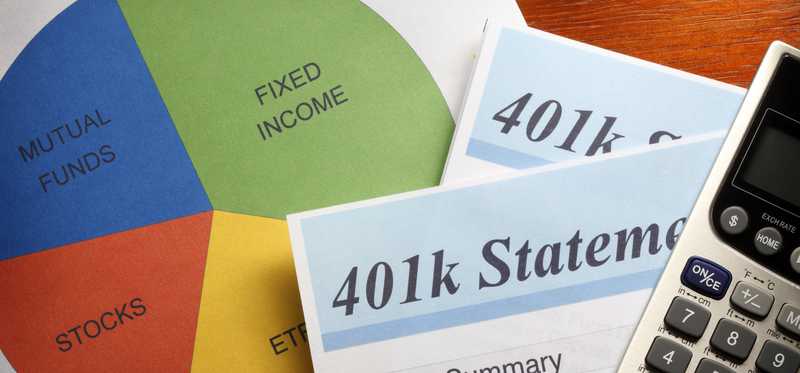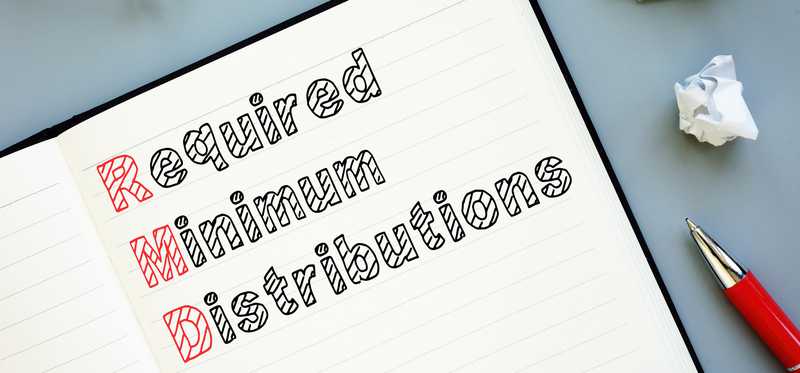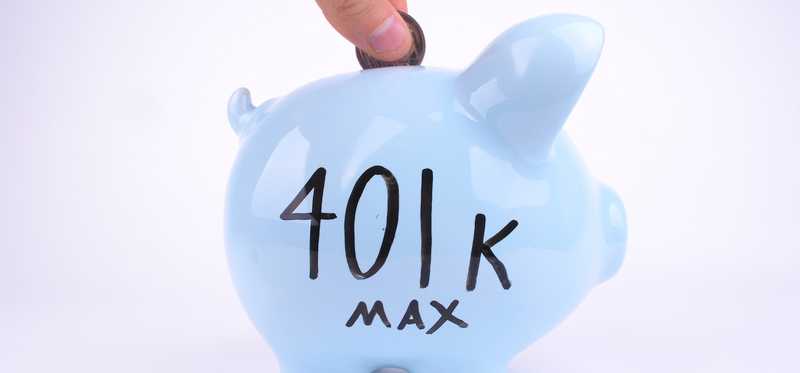10 Reasons Not to Rely on Just a 401(k) for Retirement

10 Reasons Not to Rely on Just a 401(k) for Retirement
Stay in the driver's seat
If you want to put your retirement savings on autopilot, a 401(k) is up for the job. Your workplace retirement account streamlines your wealth journey by automating your deposits, your investments, and even your annual rebalancing. The best of these accounts even pay you to save by way of employer matching contributions.
But the 401(k) isn't without flaws. And those flaws are significant enough that you may want to stash some of your retirement savings elsewhere. Here are 10 reasons not to rely solely on your 401(k) for retirement -- along with what you could be doing instead.
5 Winning Stocks Under $49
We hear it over and over from investors, “I wish I had bought Amazon or Netflix when they were first recommended by the Motley Fool. I’d be sitting on a gold mine!” And it’s true. And while Amazon and Netflix have had a good run, we think these 5 other stocks are screaming buys. And you can buy them now for less than $49 a share! Simply click here to learn how to get your copy of “5 Growth Stocks Under $49” for FREE for a limited time only.
Previous
Next

1. Lack of tax diversity
You get a break on your income taxes for every $1 you contribute to your traditional 401(k), which is awesome.
There is a price to pay for that tax perk, though. Once you start taking qualified distributions in retirement, the IRS treats those withdrawals as taxable income. This works in your favor if you're in a lower tax bracket in retirement. But what if you're not? Well, then, you've put off paying a lower tax rate today to pay more in retirement.
Most people do expect lower income in retirement, but there's no telling how income tax rates will evolve over the next few decades. You can plan for any outcome by making Roth contributions. Some 401(k)s have this option. If yours doesn't, you can save separately to a Roth IRA. You don't get a tax deduction for Roth contributions, but your qualified retirement distributions are fully tax-free.
ALSO READ: How to Retire With $1 Million on a $50,000 Salary
Previous
Next

2. Limited investment options
Your 401(k) gives you access to a limited menu of mutual funds. And as with restaurants, some menus are better than others. Your plan probably offers at least a target-date fund and some broad index funds across different asset classes.
That may or may not be enough to support your retirement plan. Those funds might have poor performance histories or high expense ratios compared with their peers. Or, your options might not provide a specific type of exposure that you want.
You can supplement the options available in your 401(k) by also saving to an IRA, traditional or Roth, or a taxable brokerage account. Many IRAs and taxable brokerage accounts give you access to the full range of exchange-traded securities and mutual funds.
Previous
Next

3. Administrative fees
Most companies pass along 401(k) administration fees to you, the plan participant. These are charged annually as a percentage of your account balance. The norm is about 1%. Fees of 2% or more would be very high.
These administrative fees cut into your investment returns. If your portfolio grew by 8% and you paid 2% in fees, your net growth is 6%. That's something like taking a half-step backwards for every two steps forward.
If you're earning employer match in your 401(k), you're probably still coming out ahead after the fees. But once you max out your employer match, you might consider saving to a low-cost IRA -- one that doesn't charge annual fees or commissions on trades.
Previous
Next

4. IRS withdrawal restrictions
The IRS wants you to keep your money in that 401(k) until you retire. That's why there's a 10% penalty associated with withdrawals taken before you are 59 and a half. You can sidestep the penalty in certain situations, such as financial hardship or losing your job after age 55. Still, you may want more flexibility to access your own funds -- especially if you're targeting retirement before your 55th birthday.
A taxable brokerage account has no withdrawal restrictions, but you get no tax perks, either. The Roth IRA offers a nice middle ground. You do get tax-deferred investment growth and tax-free withdrawals in retirement. But you can also tap your Roth contributions anytime you want, without taxes or penalties. Note that this applies to your contributions only, and not the earnings on those contributions.
Previous
Next

5. Plan withdrawal restrictions
The rules governing how you can withdraw funds from your 401(k) are established by the IRS and the plan itself. The IRS allows for lump-sum distributions, periodic distributions, IRA rollovers, and conversion of the funds into an annuity. But your plan may not offer every one of those options or may have limitations in some of them. For example, you may want semimonthly distributions of your dividend income to mimic a paycheck. Your plan, however, may only allow for quarterly and monthly distributions.
Check into your plan's rules for retirement distributions. You'll want to know which distribution options are available to you. Also, find out if partial rollovers are allowed, if you can select specific investments for liquidation, and what choices you have for the frequency of periodic distributions. If the plan has limited flexibility, that's another good reason to start saving to an IRA or taxable brokerage account.
5 Winning Stocks Under $49
We hear it over and over from investors, “I wish I had bought Amazon or Netflix when they were first recommended by the Motley Fool. I’d be sitting on a gold mine!” And it’s true. And while Amazon and Netflix have had a good run, we think these 5 other stocks are screaming buys. And you can buy them now for less than $49 a share! Simply click here to learn how to get your copy of “5 Growth Stocks Under $49” for FREE for a limited time only.
Previous
Next

6. Contribution restrictions
You may want to continue investing in retirement -- either because you enjoy it, you want to improve your own financial security, or you want to leave a larger inheritance for your loved ones. The thing is, you can't keep contributing to your 401(k) once you retire. You can, however, contribute to a traditional or Roth IRA -- as long as you have some form of earned income from, say, a business or a part-time job.
It makes less sense to invest if you're not earning income from outside your investments. But if you really wanted to and you had the funds, you could do it in a taxable account.
Previous
Next

7. RMDs
You must start taking required minimum distributions (RMDs) from your 401(k) in the year following your 72nd birthday. These are taxable withdrawals in amounts that are based on your year-end account balance plus your projected lifespan. Withdraw less than what's mandated and you'll pay the IRS 50% of the shortfall. Yikes.
RMDs force you to deplete your 401(k) savings, even if you don't need the money to cover living expenses. You can forget about trying to ride that tax-deferred earnings growth into a big inheritance for your kids.
In this area, the Roth IRA can be your savior. Roth IRAs also allow for tax-deferred earnings growth, but they are not subject to RMDs. If you don't need the money, you can leave it invested in your Roth indefinitely and then bequeath those assets to your family.
ALSO READ: These 3 Stocks Should Be in Every Retirement Portfolio
Previous
Next

8. Healthcare expenses
Did you know the average 65-year-old couple who retired in 2020 will spend an estimated $295,000 on healthcare expenses in retirement?
If you've saved enough, you could fund those expenses with 401(k) withdrawals -- but there is a cheaper way. Save to a health savings account (HSA), and you can take tax-free withdrawals to cover those medical expenses.
You're eligible for an HSA if you have a high-deductible health plan. Your HSA contributions are tax-deductible, and you can invest them to grow for the long term. Plus, you don't have to worry about oversaving to an HSA. After age 65, you can take taxable withdrawals for nonmedical purposes. That means you could use the money for regular living expenses if you needed to.
Previous
Next

9. Contribution limits
The 401(k) has ample contribution limits. In 2021, you can contribute up to $19,500 or $26,000 if you're over 50 -- not including your employer match. That's enough for most savers, but then you might not be like most savers.
To avoid a lifestyle downgrade in retirement, you usually need to contribute 10% to 15% of your pay, starting in your 20s. If you wait until your 30s or 40s to start saving, you'd need a much higher contribution rate. If you try to do that while making six figures, you risk reaching the cap on 401(k) contribution limits. As an example, with income of $130,000, a 15% savings rate could be your max.
You can supplement the 401(k) contributions with IRA and HSA contributions. If you max out those, too, then save additional funds to a taxable brokerage account.
Previous
Next

10. Less flexibility to be opportunistic
Your 401(k) is not set up to allow for opportunistic investing moves, such as buying when the market is down. If you have the stomach for that activity, it does make sense to fund it with long-term savings -- since there's no telling how long the recovery will take. But you'll have a hard time doing it in your 401(k).
If the stock market suddenly "goes on sale," you could raise your 401(k) contribution temporarily. But you'll be limited by your paycheck, as well as how much you've already contributed for the year. Plus, the higher contribution could take a pay cycle or two to be implemented. At that point, you may have missed your opportunity.
You can move much faster in an IRA or a taxable brokerage account. The only logjam would be the time it takes you to transfer funds in so they're available to trade.
5 Winning Stocks Under $49
We hear it over and over from investors, “I wish I had bought Amazon or Netflix when they were first recommended by the Motley Fool. I’d be sitting on a gold mine!” And it’s true. And while Amazon and Netflix have had a good run, we think these 5 other stocks are screaming buys. And you can buy them now for less than $49 a share! Simply click here to learn how to get your copy of “5 Growth Stocks Under $49” for FREE for a limited time only.
Previous
Next

Grab the wheel
Your 401(k) will put your retirement savings on autopilot -- but you can have even better results by occasionally taking hold of the wheel. Saving outside your 401(k) delivers tax diversity and all-around financial flexibility. Just make sure you max out your employer contributions first, since that's your only source of free money. You might also prioritize HSA contributions, since those are the only funds that will support tax-free medical expenses, both now and in retirement.
The Motley Fool has a disclosure policy.
Previous
Next
Invest Smarter with The Motley Fool
Join Over Half a Million Premium Members Receiving…
- New Stock Picks Each Month
- Detailed Analysis of Companies
- Model Portfolios
- Live Streaming During Market Hours
- And Much More
READ MORE
HOW THE MOTLEY FOOL CAN HELP YOU
-
Premium Investing Guidance
Market beating stocks from our award-winning service
-
The Daily Upside Newsletter
Investment news and high-quality insights delivered straight to your inbox
-
Get Started Investing
You can do it. Successful investing in just a few steps
-
Win at Retirement
Secrets and strategies for the post-work life you want.
-
Find a Broker
Find the right brokerage account for you.
-
Listen to our Podcasts
Hear our experts take on stocks, the market, and how to invest.
Premium Investing Services
Invest better with The Motley Fool. Get stock recommendations, portfolio guidance, and more from The Motley Fool's premium services.